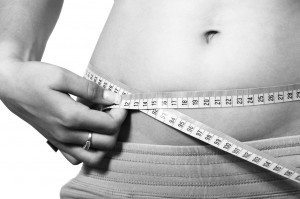The Science of Weight Loss
During exercise the human body uses predominantly fat and carbohydrate as a fuel source. The ratio (percentage) of the fuel source used depends on the intensity and the duration of the exercise. During high intensity exercise, the body will rely heavily on carbohydrates as the energy source. Whereas during low intensity exercise the body will source a high proportion of fat for fuel. This is occurs physiologically because fats take longer than carbohydrates to be broken down and to be used as fuel for exercise. At lower intensities of exercise our body is able to break down fats. However, at higher intensities we need fuel more rapidly to meet the immediate demands of the exercise. Therefore, in high intensity situations, carbohydrates can be more rapidly broken down for fuel compared to fats.
When targeting exercise for weight loss however, higher intensity exercise will burn a greater amount of calories than exercising at lower intensities. As such, the percentage of fat versus carbohydrates used an energy substrate should be balanced against the total number of calories burned. In high intensity exercise, there is a higher amount of energy consumed during exercise – as well as a higher amount of energy consumed by the body post in post exercise recovery. Higher intensity exercise is therefore more effective in burning more fat.
Remember however that exercise isn’t the entire story of weight loss. Weight loss is influenced by the equation of calories consumed versus the amount of calories you burn. For example, if you eat more calories than you burn, you will gain weight. If you burn more calories than you eat, you will lose weight.
Weight loss can be attributed to approximately 75% a healthy diet and 25% exercise. Therefore, you should consider limiting calorie intake in an attempt to lose weight. However, exercise must not be forgotten, and it becomes clear that the harder you work, the more calories you will burn.

Exercise for Weight Loss
High intensity interval training (HIIT)
During moderate continuous aerobic training, your body reaches what is known as a steady state, where the oxygen supply meets your oxygen demand. This is a state that your body is quite comfortable in, and this form of training does have benefits. However, HIIT pushes your body beyond this steady state, and with this higher intensity, more calories can be burned. HIIT should be performed at approximately 80-90% of your max heart rate, and should be between approximately 15-16 on Borg’s 20 point ‘rate of perceived exertion’ scale. A 15 on this scale would be equal to ‘hard’ exercise and a 17 equates to ‘very hard’.
A 70kg man would burn approximately 225 calories running at 10km per hour for 30 minutes, but this same man would only burn approximately 90 calories if he walked at 5.5km per hour for the same amount of time.
This higher level of intensity will become even more effective when used with short bursts of high intensity intervals and periods of rest. This helps to boost your metabolism for up to 24-48 hours post-exercise, a process known as excess-post exercise oxygen consumption (EPOC). After completing such a high intensity session, your body goes into repair mode to heal the stressed muscle tissue. The more oxygen used during and after your workout will lead to a greater EPOC, and a greater burning of calories after the cessation of exercise. Therefore, you can reap the rewards of your training for hours after you have finished!
It is important to complete aerobic training for weight loss, but combining it with strength training will provide the greatest benefits. If you are only performing cardio for weight loss, you can lose not only fat, but also muscle. Without adequate resistance training in your routine, you may be losing lean muscle mass which will slow down your metabolism. Additionally, resistance training, much like HIIT training, also helps to burn calories for up to 1-2 days post exercise.
The World Health Organisation (WHO) physical activity guidelines recommends adults require 250 minutes per week, or 50 minutes of exercise on 5 days per week, to lose significant weight. For weight maintenance, 150 minutes per week would suffice. Combining strength and aerobic training and meeting these time constraint recommendations will provide you with the greatest chance to reach your weight loss goals.
As the warmer weather and sunny days will soon (hopefully) approach us, what better time to take action and lose that lingering excess weight.
For more information please contact Inspire Fitness for Wellbeing on 9857 3007 to speak to one of our Exercise Physiologists or Personal Trainers today.
